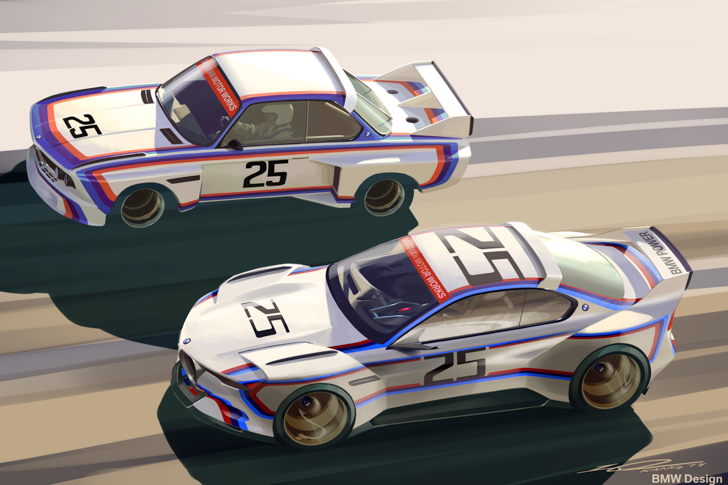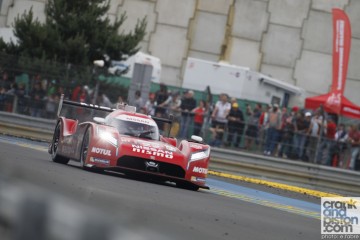Forget the Monaco Grand Prix. Forget the Baturst 1000. Hell, even forget the 24 Hours of Le Mans. The Indianapolis 500 could be the race among races if experimental cars are allowed to enter.

So it’s emerged that the IndyCar Series might allow an experimental ‘Garage 46’ car to enter the Indianapolis 500 in the next few years. It’s a bold statement and one that has been attempted before, most notably in 2011 when the DeltaWing project (ironically an early prototype for a new IndyCar chassis that preceded the now established Dallara DW12 design) took on the 24 Hours of Le Mans. Even now I can hear purists decrying the idea, arguing that this kind of controversy has no place in American single seater racing. I, however, think ‘why not?’ Throw in an experimental entry at the brickyard – ‘the big one’ – and you could potentially have one of the most exciting Indy 500s ever in 2014/2015, or at least one of the most memorable.
It’s no surprise that ‘the split’ in 1996 – which pitted the established CART series against the new Indy Racing League set up by Indianapolis Motor Speedway owner Tony George – hurt American single seater racing badly: making teams and drivers choose between a world championship and a blue riband event that seals its victors in the history books is never a good idea. Team sponsors reveal split loyalties, grid numbers go down, those all-important TV ratings tumble, and fans – bored by a race that’s lost its way – show their disapproval with their feet. Straight towards those NASCAR grandstands.

Fast forward two decades and a revived, re-united IndyCar Series is growing in strength, despite the odd political rankle and economic worry: such things follow motorsport incessantly. For 2012, a new chassis aimed at reducing costs and improving safety (poignantly, the DW12 was named after two-time Indy winner Dan Wheldon who died at the Las Vegas Motor Speedway in 2011) have made team entries and running costs more affordable and a more competitively balanced series that much more exciting. Divided loyalties are a thing of the past, a stronger series – and its blue riband event – now a more enticing prospect for both established and rookie drivers to either prove they’ve still got it, or make a name for themselves on the grandest stage of them all. Names like fan favourites Tony Kanaan, Helio Castroneves and the latest of the Andretti dynasty, Marco; former F1 and Indy winners Juan Pablo Montoya – following seven years in the NASCAR doldrums – and Jacques Villeneuve (back for another crack at the event he won way back in 1995) go a long way to filling the chasm left by four-time IndyCar champion and three-time Indy winner Dario Franchitti. Let’s not forget the pulls of Penske, Chip Ganassi and Dale Coyne Racing (David really can beat Goliath at Indy) among others, nor the heart-ache/grandstand finishes that the brickyard can produce: rookie J. R. Hildebrand’s last corner heartache will live on forever in brickyard infamy.
Now, I ask you, add to that an experimental entry…

For well over a century, motorsport has thrived on innovation. Lotus was the first team to use rear wings on its 49 F1 car in 1968, and the sport never looked back.
Brabham’s infamous BT46 ‘fan car’ upturned the formbook by winning the 1978 Swedish Grand Prix thanks to herculean amounts of downforce and would never race again. The Indy 500’s first ever winner – Ray Harroun – claimed victory with his radical new technology, the ‘rear-view mirror’. Even the DeltaWing, mocked and derided when it first hit the scene at the turn of the decade, has since inspired the ZEOD RC, which will not only take on Le Mans this year bit is also being used as a technological exercise for improving safety and performance in Nissan’s road car division. Who’s to say that the next radical technology to shape the road car industry won’t come from the IndyCar Series?

And then there’s the kicker: good old-fashioned fan curiosity. Just as motorsport cannot thrive without innovation, so a race-going punter cannot take his eyes off the unorthodox car or driver in the paddock. I’ll bet for instance, most of you can tell me what was special/weird about the Tyrrell P34 from 1976-1977. But who amongst you can tell me which car secured the team its final F1 victory? While many of you could also name the Japanese driver whose valiant attempts to re-start the DeltaWing at Le Mans in 2011 was shared all over the world, how many of you could also name the event’s winning driver line-up?
I say bring on the innovation. Judging from the early line-up alone, the 2014 Indy 500 could be one of the most memorable of recent times. It could also be the start of things to come.
– Shots courtesy of Camden Thrasher Images



